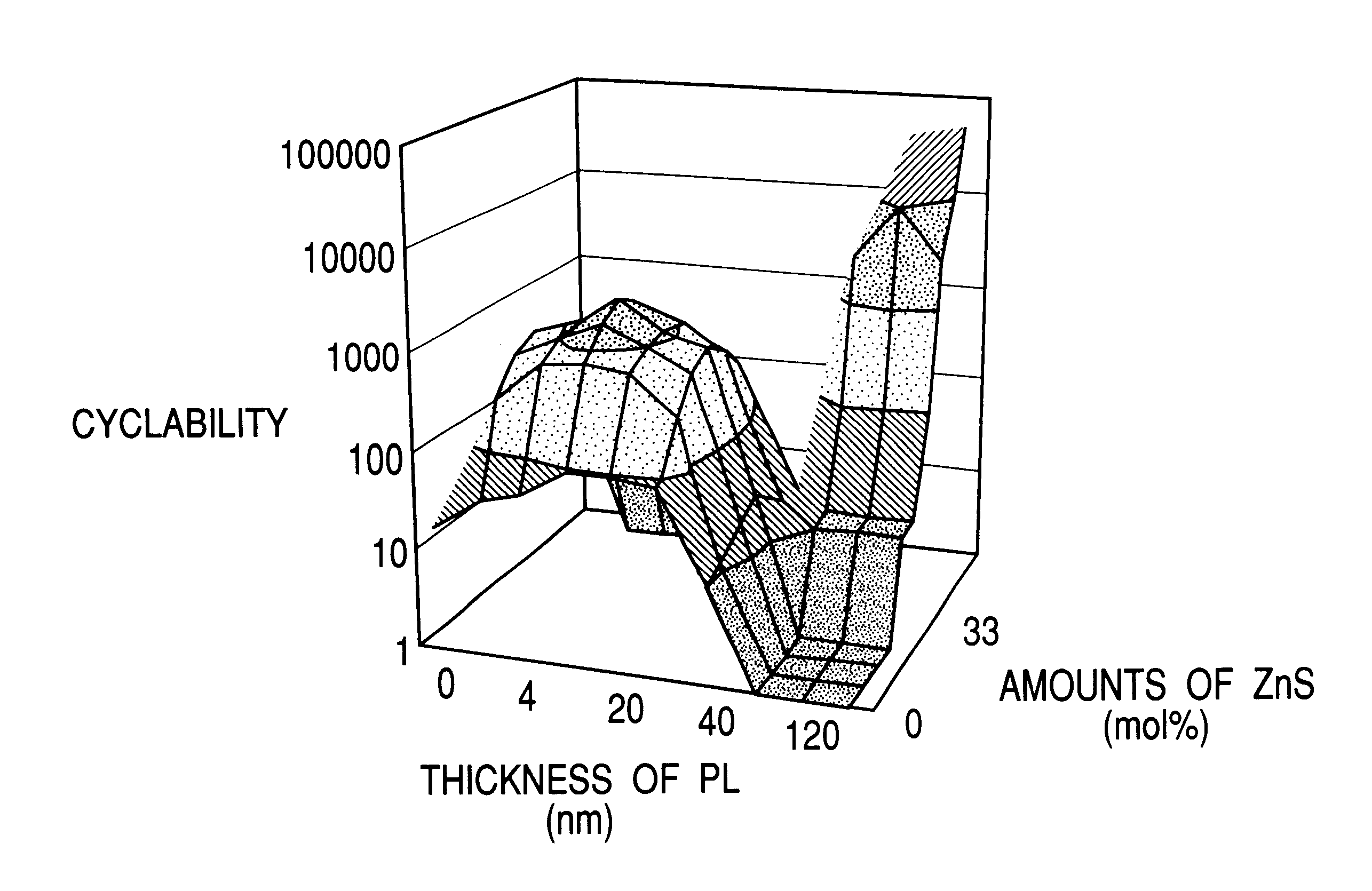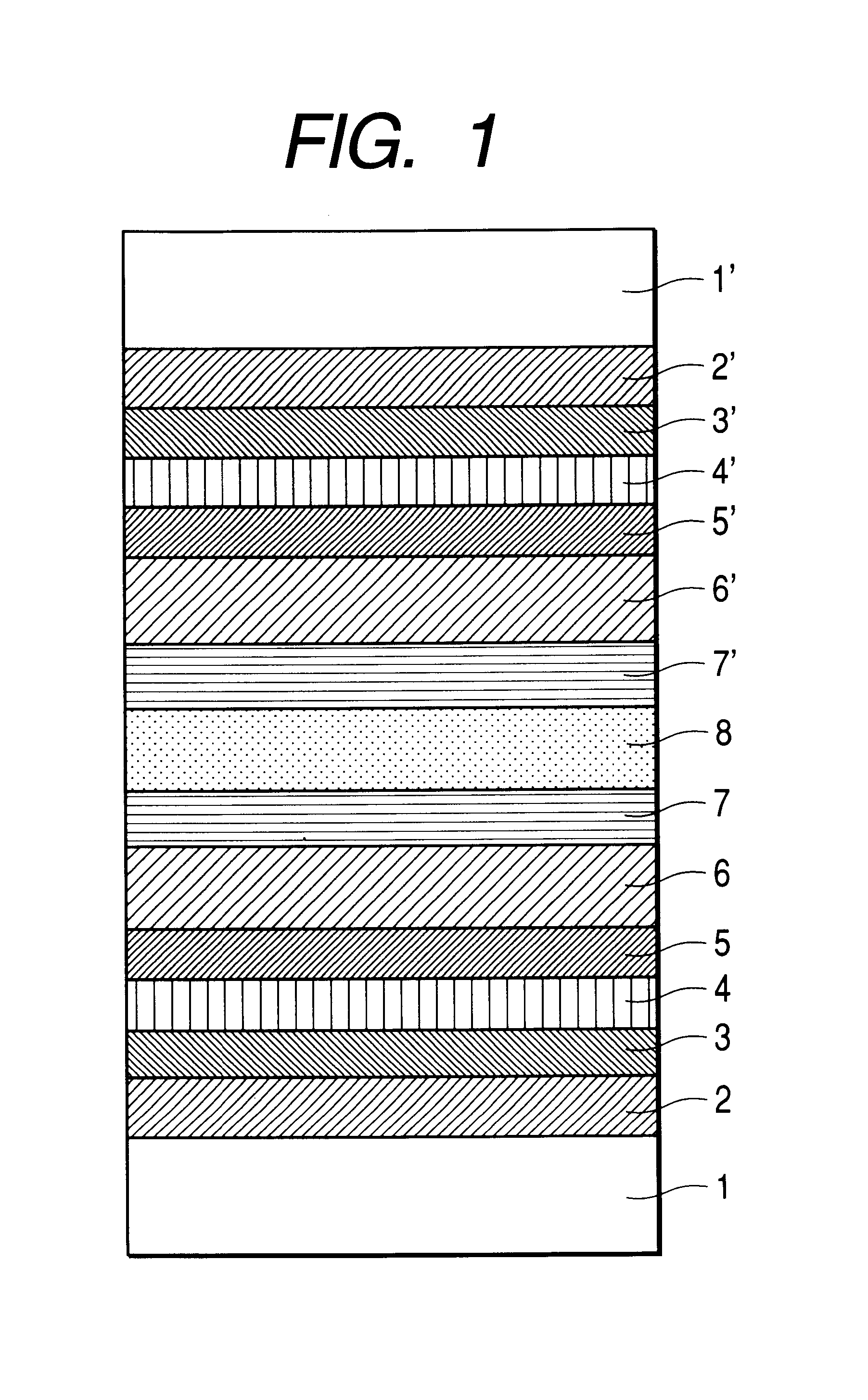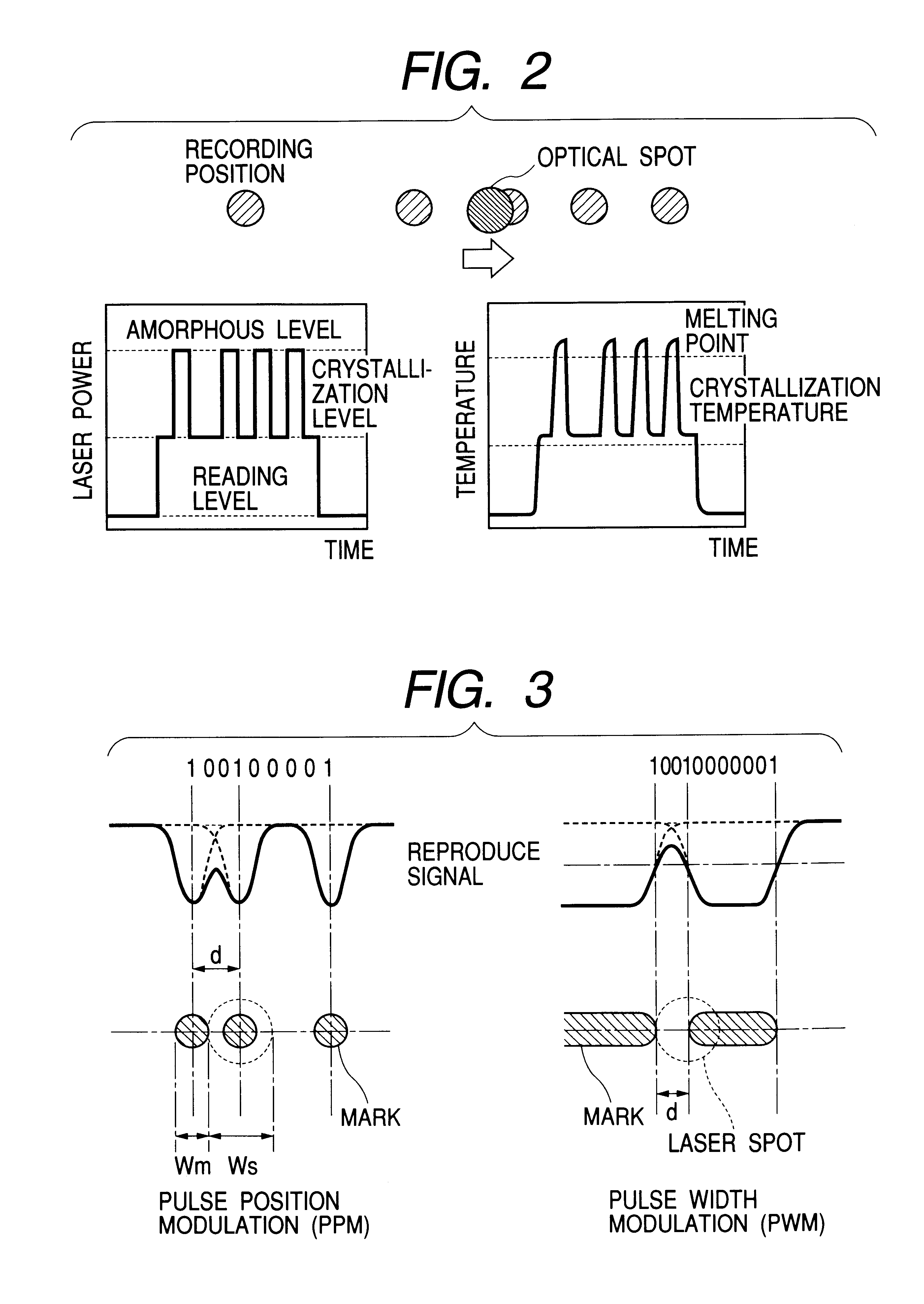Information recording medium with SiO2-In2O3-SnO2-ZnS protective layer
- Summary
- Abstract
- Description
- Claims
- Application Information
AI Technical Summary
Benefits of technology
Problems solved by technology
Method used
Image
Examples
Example
[Embodiment 1]
(Constitution of an Information Recording Medium of the Present Invention and a Manufacturing Method Thereof)
FIG. 1 is a view showing a cross-section structure of a disk-shaped information recording medium according to a first embodiment of the present invention. The above medium is manufactured as described below.
First, on a polycarbonate substrate 1 with a diameter of 12 cm and a thickness of 0.6 mm, which has tracking grooves of land / groove recording at a track pitch of 0.615 micron on its surface and has pit rows expressing address information and the like at a position shifted from a track center, that is, approximately on an extension of a boundary line of a land and a groove, a first protective layer 2 made of (SiO2)60((In2O3)90(SnO2)10)25(ZnS)15 with a film thickness of 8 nm. Next, a lower interface layer 3 made of a Cr2O3 film is formed with a film thickness of 2 nm. Subsequently, the followings are sequentially formed, including: a recording film 4 made of Ge...
Example
COMPARATIVE EXAMPLE 1
A disk (comparative example 1), which is different from the disk of the embodiment 1 only in the first protective layer, is prepared, and the tact is compared therebetween by a similar method to the embodiment 1. Then, the following result is obtained.
(Production Tact)
As to the information recording medium of the comparative example 1, when six layers are formed by use of a film formation device, the lamination tact is 40 seconds, which is decided depending on a sputtering rate of a material constituting each of the layers and a film thickness of the laminated layer.
TABLE 4FilmLaminationChamber numberthicknesstime(formed layer)Constitution material(nm)(s)1 (First protec-(ZnS)80(SiO2)2012040tive layer)2 (Interface layer)Cr2O3233 (Recording film)Ge7Sb2Te41064 (Second protec-SnO2336tive layer)5 (AbsorptionCr90(Cr2O3)10349control layer)6 (Reflective layer)Al609
In a film formation device having seven chambers or more, the tact can be further shortened. However, the f...
Example
COMPARATIVE EXAMPLE 2
A disk (comparative example 2), which is different from the disk of the embodiment 1 only in the material of the first protective layer, is prepared, and a jitter in the numerous rewritings is measured by use of a similar method to the embodiment 1. Then, as shown in FIG. 7, the jitter increases to 13% or more after overwrites of more than 100 times.
As to the first protective layer according to the comparative example 2, a first protective layer 2 made of (SiO2)60((In2O3)90(SnO2)10)40 is formed with a film thickness of 8 nm. As to a method for forming the film, sputtering is performed in an Ar gas atmosphere.
PUM
 Login to view more
Login to view more Abstract
Description
Claims
Application Information
 Login to view more
Login to view more - R&D Engineer
- R&D Manager
- IP Professional
- Industry Leading Data Capabilities
- Powerful AI technology
- Patent DNA Extraction
Browse by: Latest US Patents, China's latest patents, Technical Efficacy Thesaurus, Application Domain, Technology Topic.
© 2024 PatSnap. All rights reserved.Legal|Privacy policy|Modern Slavery Act Transparency Statement|Sitemap



